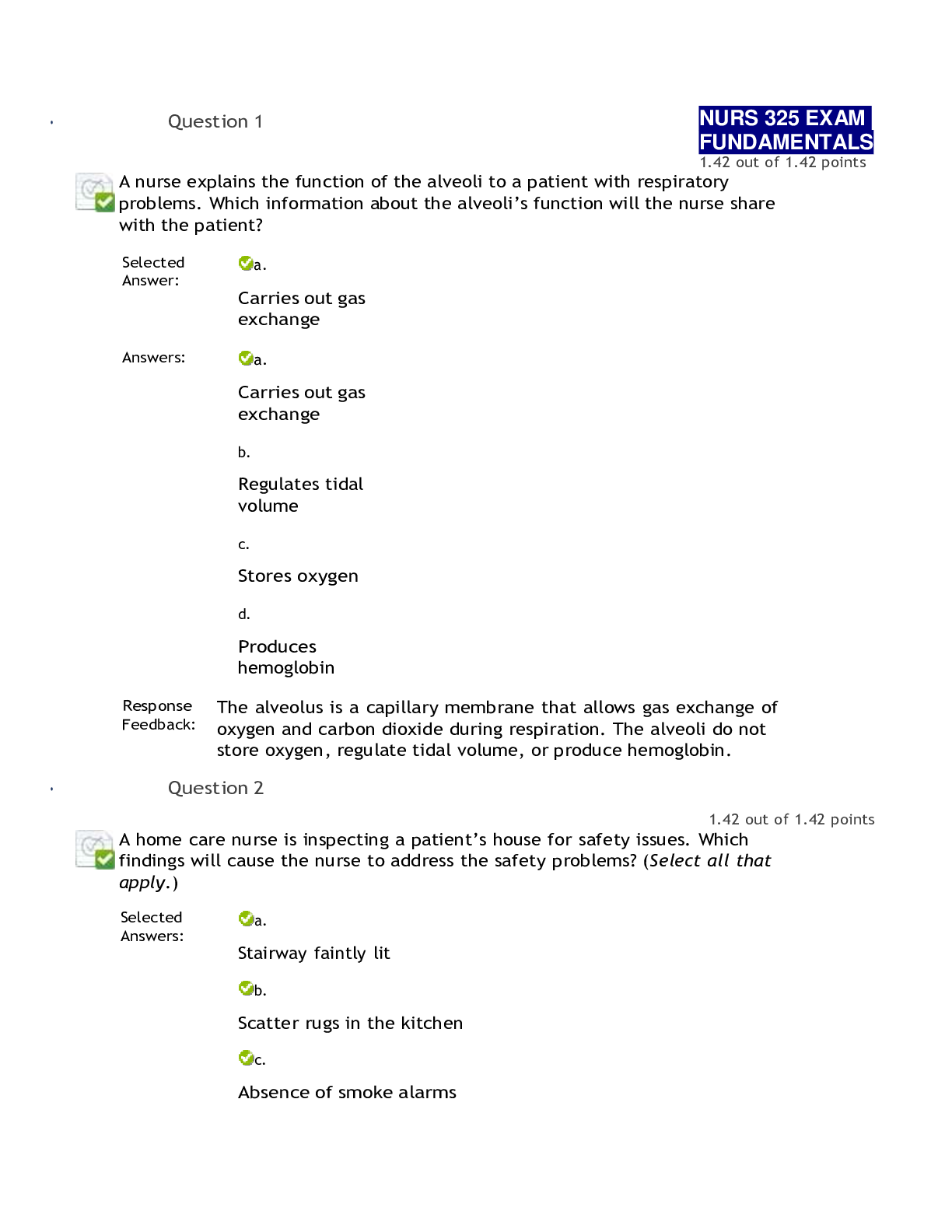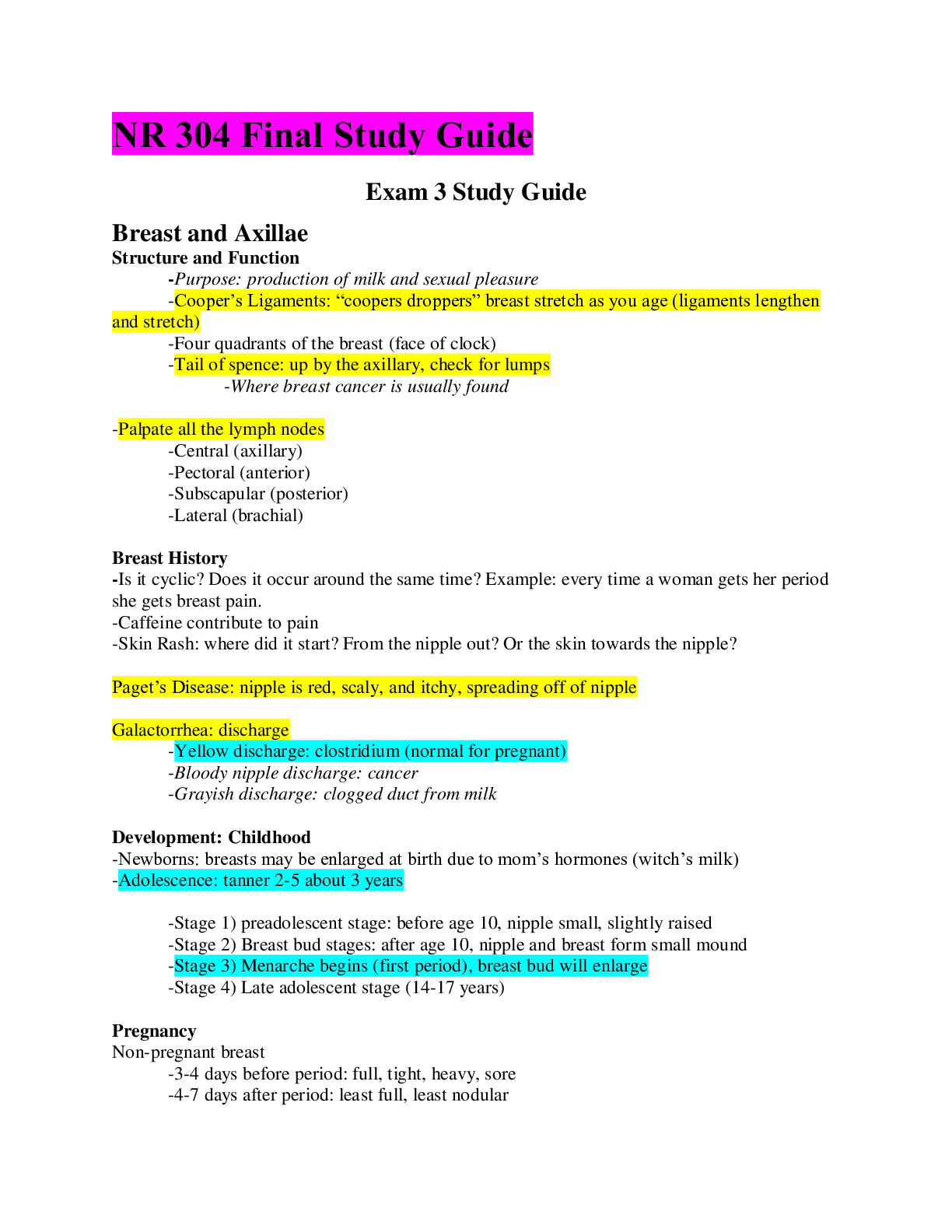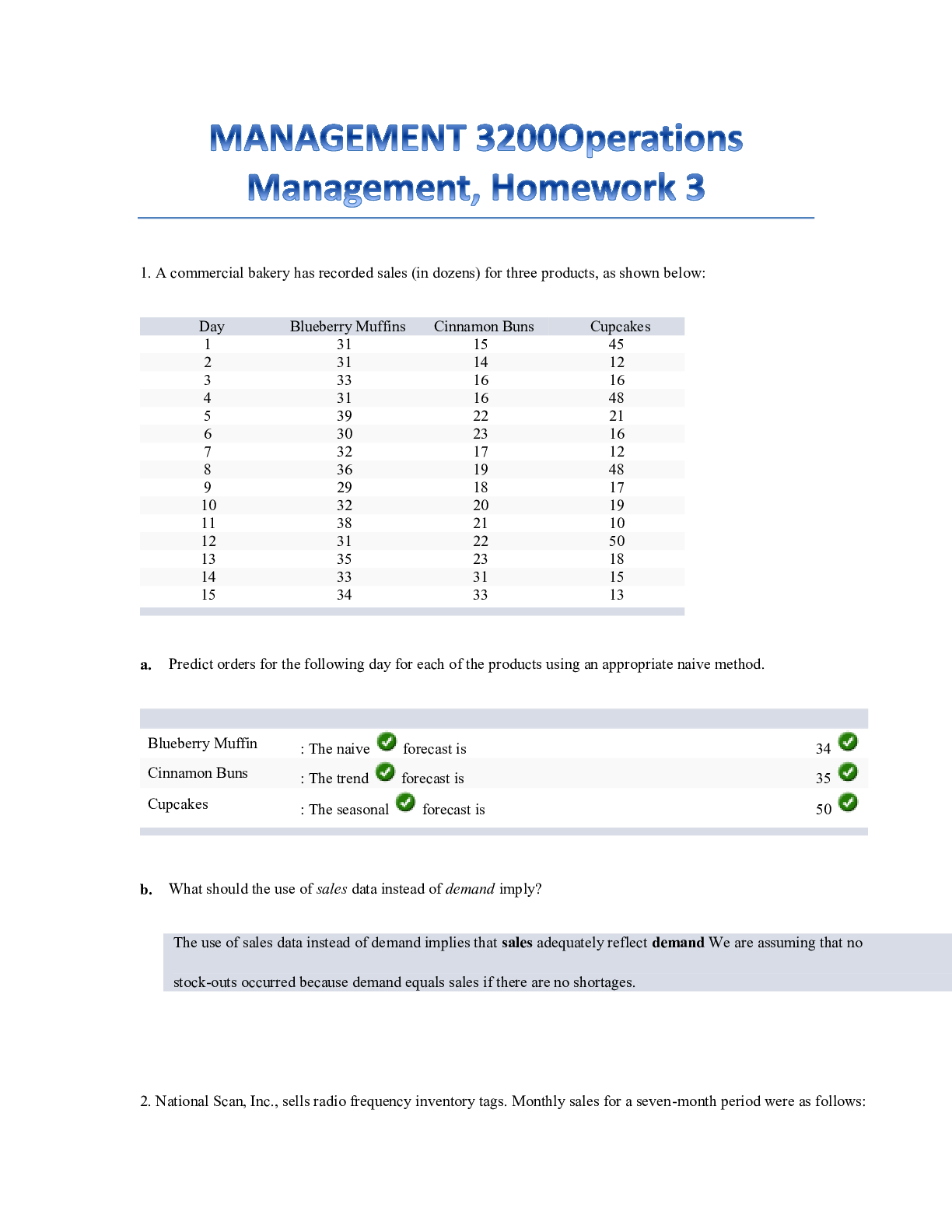*NURSING > STUDY GUIDE > NUR 2488 - Exam 3 Key Concept Guide (All)
NUR 2488 - Exam 3 Key Concept Guide
Document Content and Description Below
Exam 3 Key Concept Guide (Modules 7, 8, & 9) Chapter 12 – Somatoform Disorders • Somatoform Disorders – highest priority nursing intervention (Table 12-2, 12-3 & 12-4) & secondary gains T... reatment: Primarily psychosocial interventions o Assessing the patient’s ability to meet basic needs o Assessing the risks to safety and security needs o Identifying secondary gains the patient is experiencing o Exploring the patient’s ability to state feelings and needs • Hypochondriasis - signs/symptoms • Conversion Disorder – define and nursing interventions • Dissociative Fugue • Body Dysmorphic Disorder – Care Plan; Highest Priority Chapter 13 – Personality Disorders • Personality Disorders – describe – In people with a personality disorder (PD), personality traits are exaggerated and rigid to the point that they cause dysfunction in their relationships. • Borderline Personality – characteristics & nursing interventions o Emotional instability Separation insecurity o Depression (chronic) Fear feelings of abandonment o Excessive demands, impulsive behavior, uncontrolled anger o Stormy relationships Idealization and devaluation o Self-mutilation and prone to suicide Splitting • Dependent Personality - describe • Histrionic Personality – nursing interventions • Antisocial Personality – describe • Table 13-2 Interventions for Manipulation Chapter 14 – Eating Disorders • Anorexia – signs/symptoms, assessment, milieu management (Table 14-1) • All-or-Nothing Thinking- Cognitive Distortions (Box 14-4) • Refeeding Syndrome – Clinical Manifestations • Bulimia – prioritize nursing interventions (health teaching) (Table 14-2) • Comorbidities of anorexia • Box 14-2 and Box 14-3 Chapter 18 – Neurocognitive Disorders • Memory Care – Reminiscing (Table 18-5) • Dementia – Family Teaching/Education • Agnosia • Delirium – orientation • Delirium interventions- Table 18-3 • Visual & Tactile Hallucinations – Priority Nursing Dx • Visual & Auditory Illusions – Nursing Interventions • Medications given for Behavioral Symptoms/Combativeness in Alzheimer’s Patients • Caregiver Fatigue – Nursing Interventions (Health Teaching & Promotion) Table 18-7/ Table 18-8 Chapter 19 – Addiction & Compulsions • Alcohol Dependence – Relapse Prevention Plan (Health Teaching Box 19-5) • PCP Overdose – Nursing Interventions (Table 19-10) • Opioid Overdose – Clinical Manifestations; Signs/Symptoms (Table 19-6) • Heroin Overdose – Clinical Manifestations; Signs/Symptoms (Table 19-6) o Know about Narcan – why it’s given, side effects after it’s given and nursing interventions after given • Alcohol Withdrawal Delirium o Medical emergency o Possible death o Peaks 2 to 3 days after cessation and reduction o Autonomic hyperactivity o Sensorial and perceptual disturbances o Fluctuating loss of consciousness (LOC) o Delusions (paranoid) o Agitated behaviors o Body temperature 100° F or higher • CNS Stimulants Withdrawal (Table 19-6) • Cocaine Abuse & Alcohol – How are they related? • Alcohol Withdrawal – Symptoms & when they peak Alcohol Withdrawal • Early signs within a few hours • Peaks within 24 to 48 hours • Rapidly and dramatically disappears unless it progresses to delirium • Irritability and “shaking inside” • Grand mal seizures possible in 7 to 48 hours after cessation • Illusions • Potential Medications given for alcohol withdrawal, cravings or substance abuse (Table 19-2 & 19-4) • Pg. 296- What is a heavy drinker? • Medications for CNS Depressants- (Table 19-5) Chapter 21 – Child, Partner and Elder Violence • Domestic Violence • Emotional Abuse • Child Abuse – Nurse’s Legal Responsibility & Potential Nursing Dx (Table 21-2) Chapter 22 – Sexual Violence • Sexual Assault – Nursing Interventions (Table 22-2) Chapter 24 – Anger, Aggression and Violence • Physical Aggression – Signs/Symptoms • Violent Behavior – Highest Risk (Box 24-1) • Restraint & Seclusion • Pg. 379- Nursing interventions for maintaining safety Chapter 26 – Children & Adolescents • ADHD – medications (CNS Stimulants) • Pervasive Developmental Disorders/Autism – Signs/Symptoms Chapter 28 – Older Adults • Risk for suicide • Interview techniques • Risk for abuse- types of abuse ***Know the difference between Objective and Subjective data in the nursing assessment*** [Show More]
Last updated: 1 month ago
Preview 1 out of 3 pages
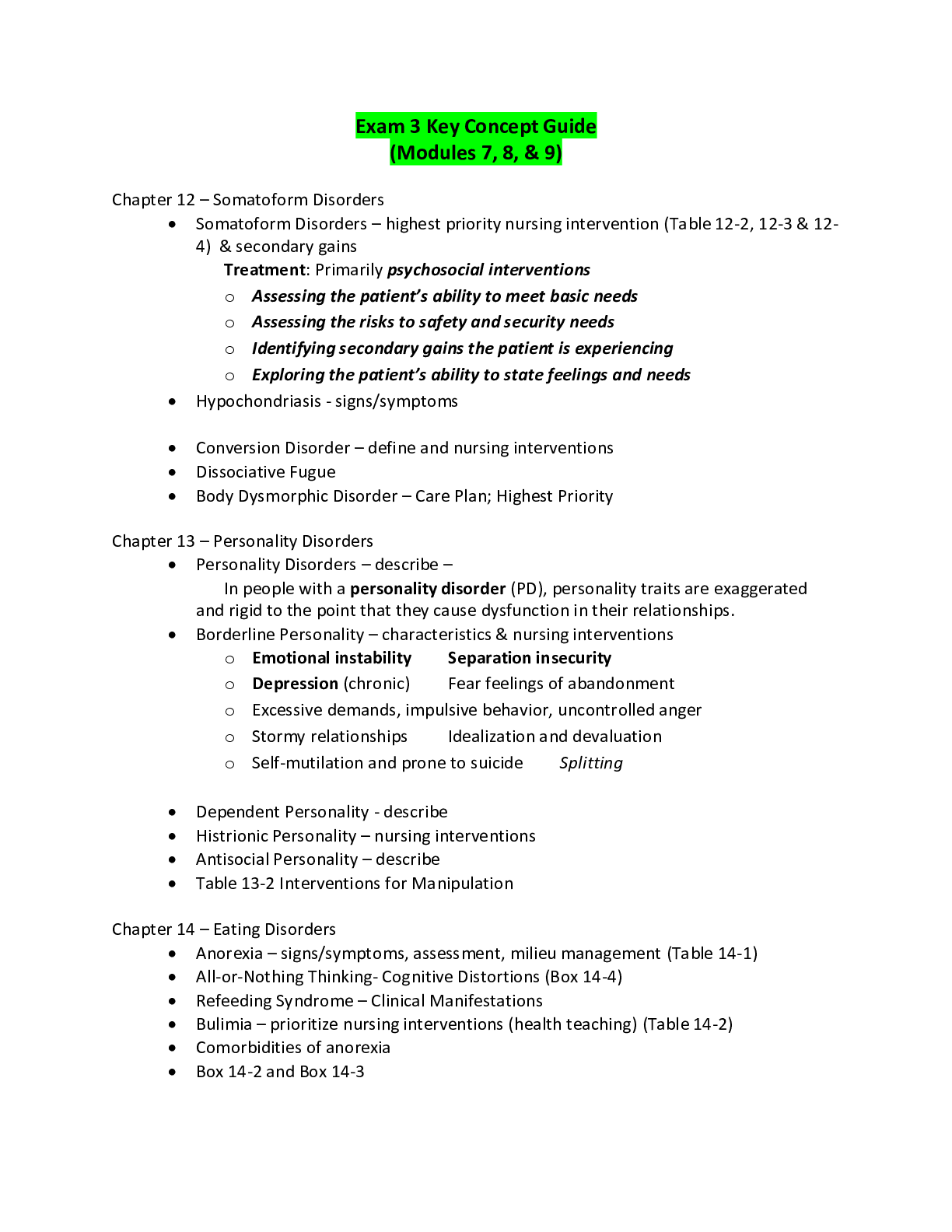
Reviews( 0 )
Document information
Connected school, study & course
About the document
Uploaded On
Jan 25, 2021
Number of pages
3
Written in
Additional information
This document has been written for:
Uploaded
Jan 25, 2021
Downloads
1
Views
60




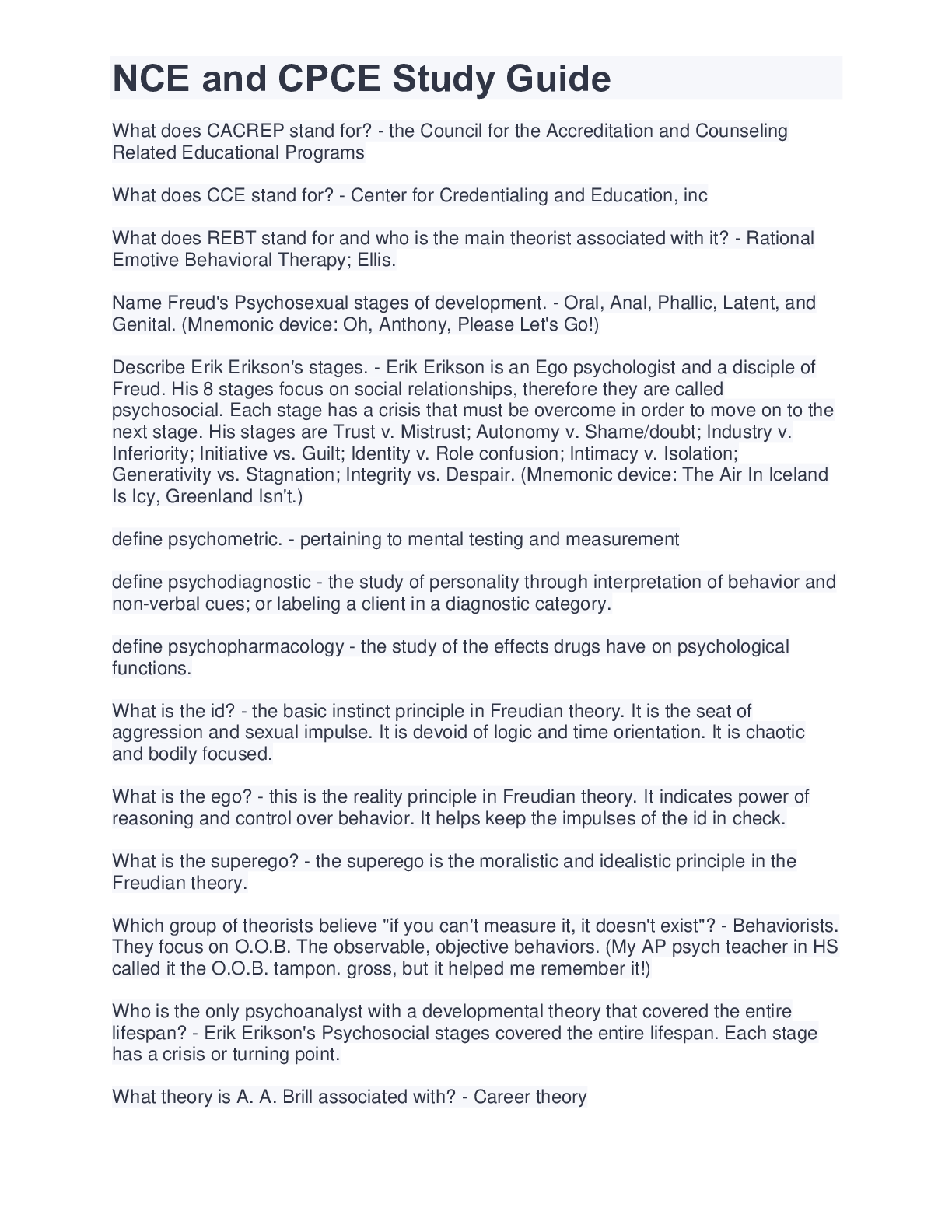
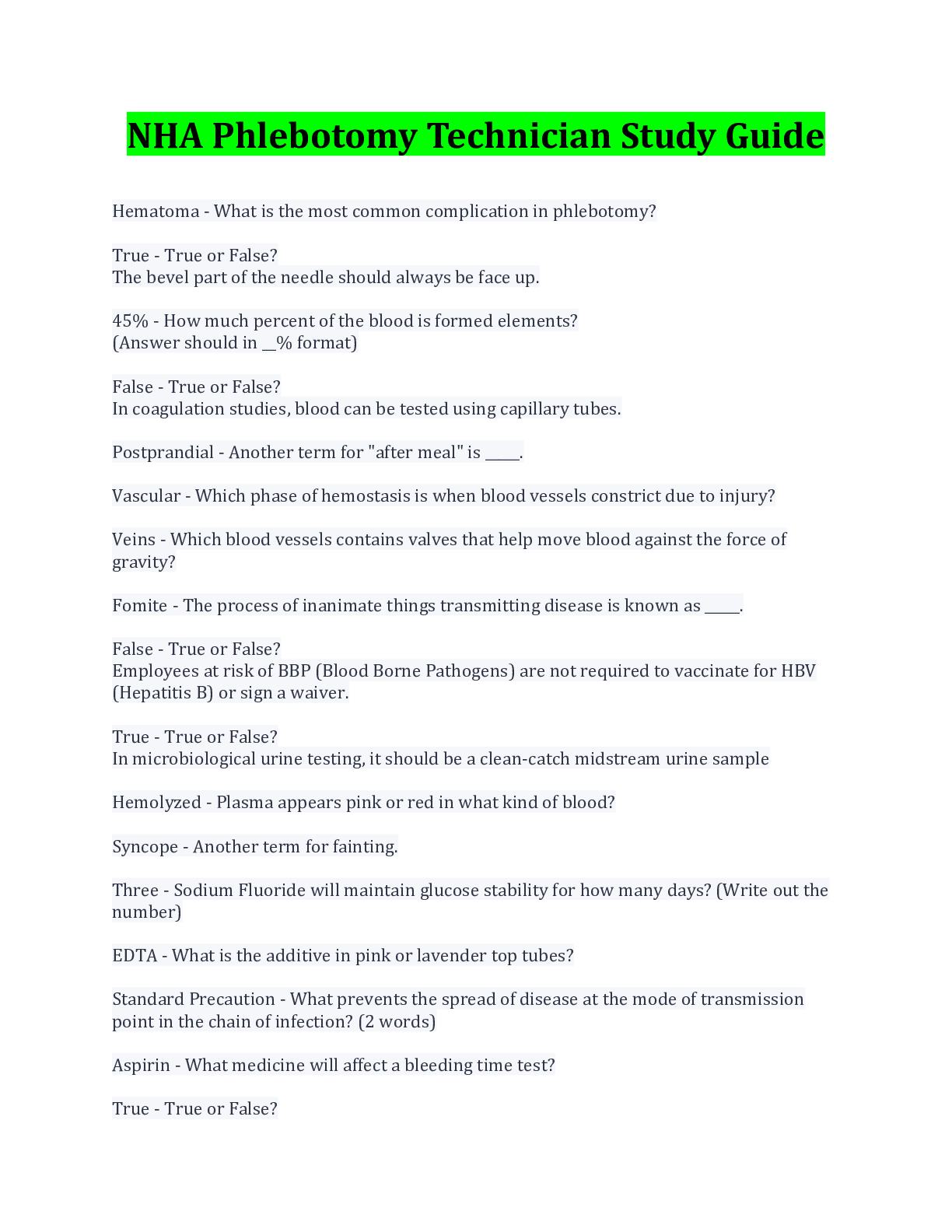

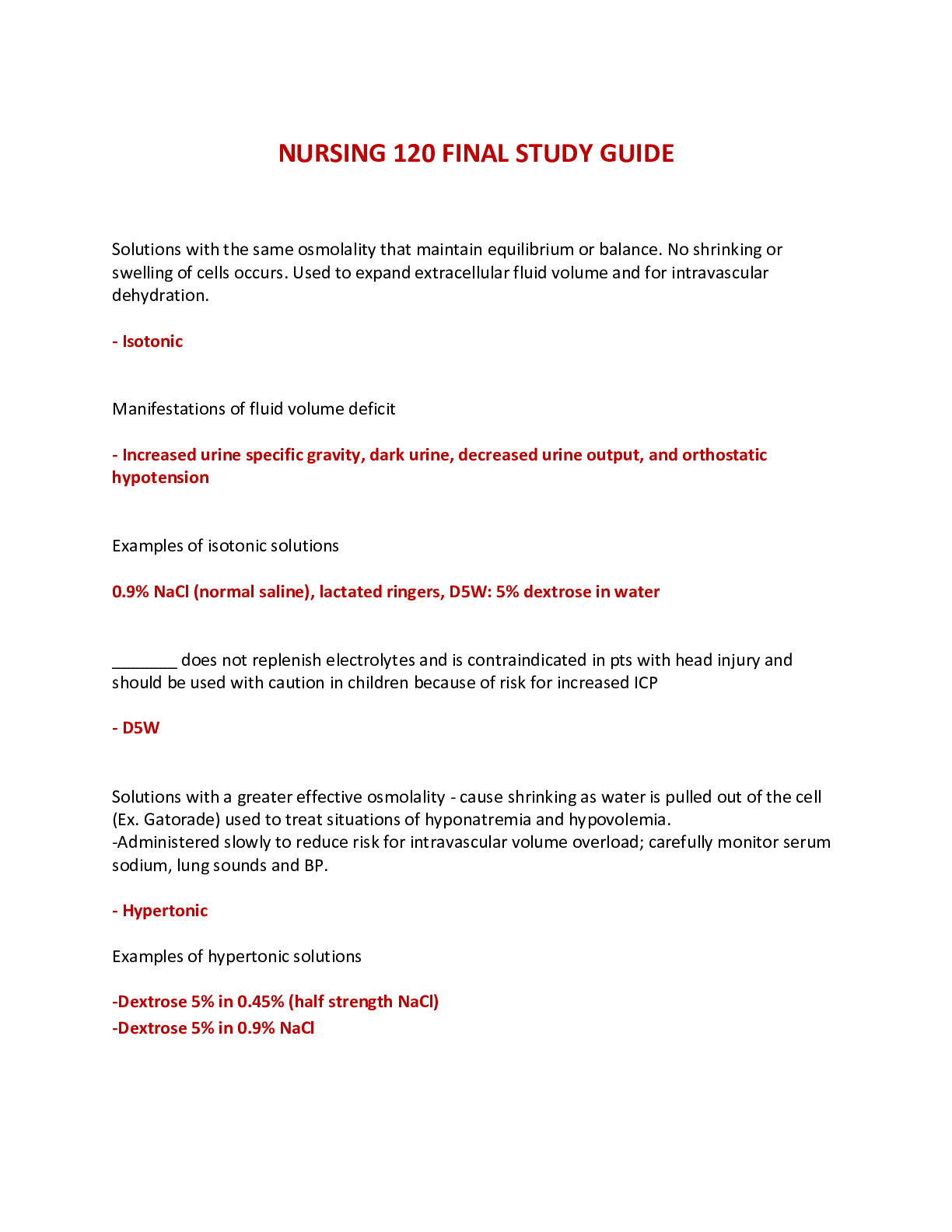
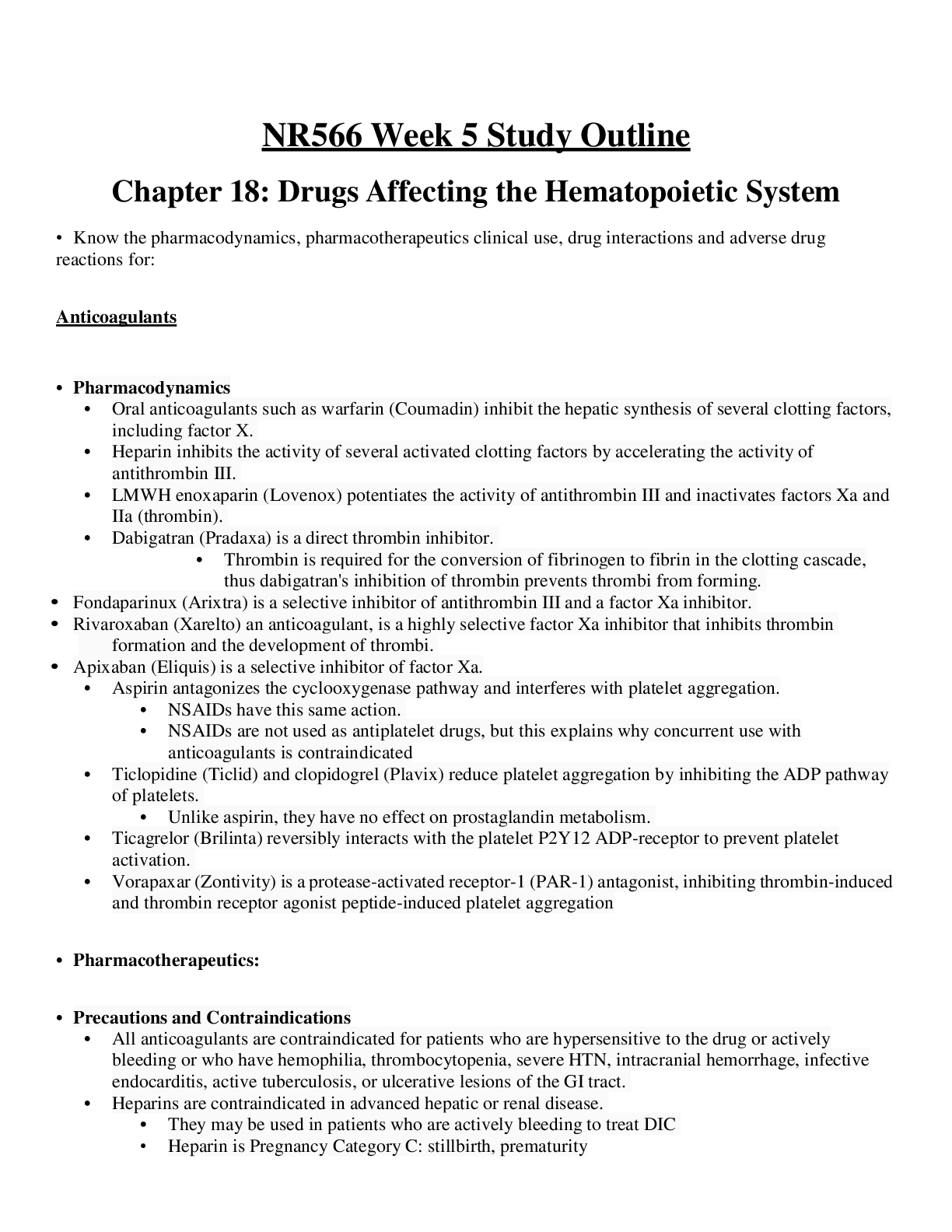



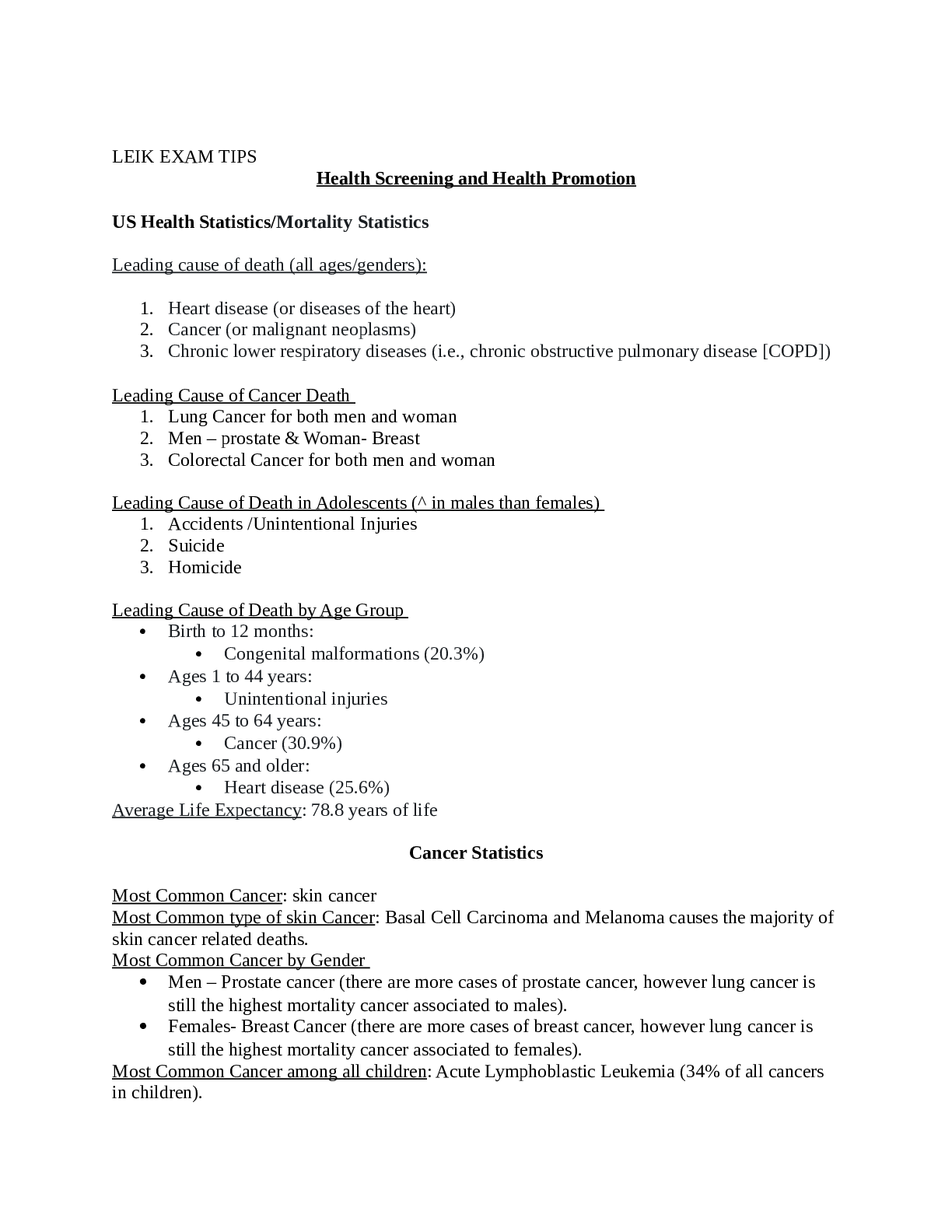
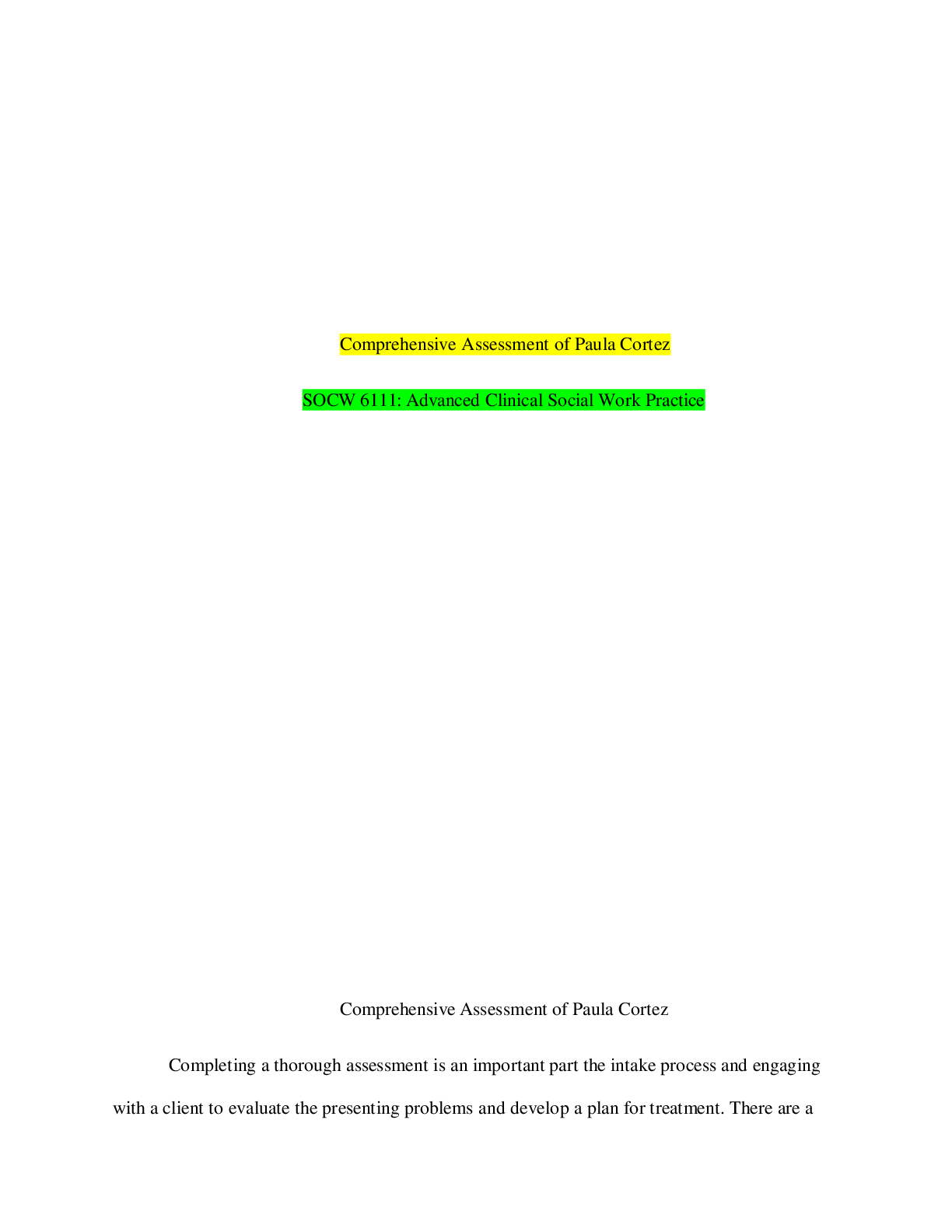

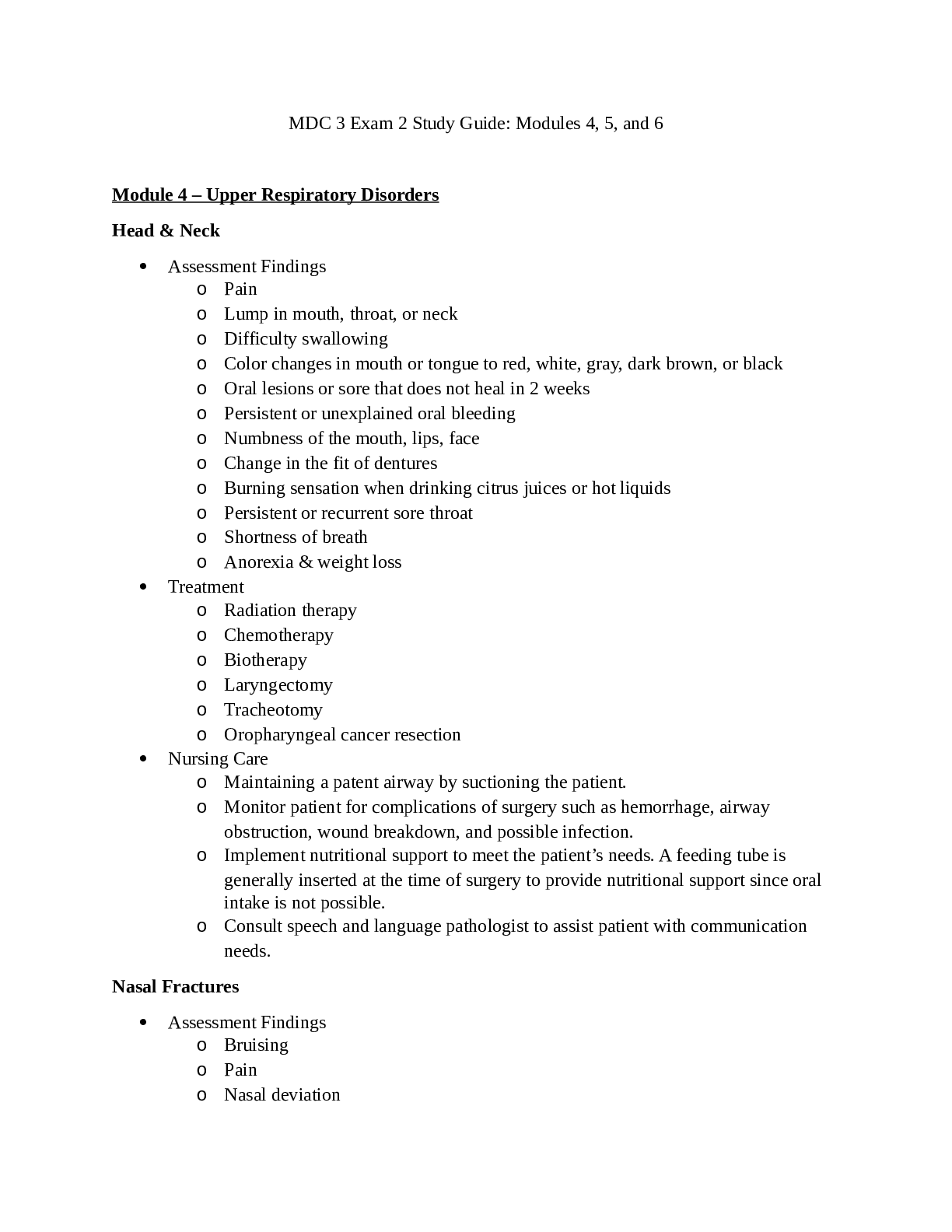
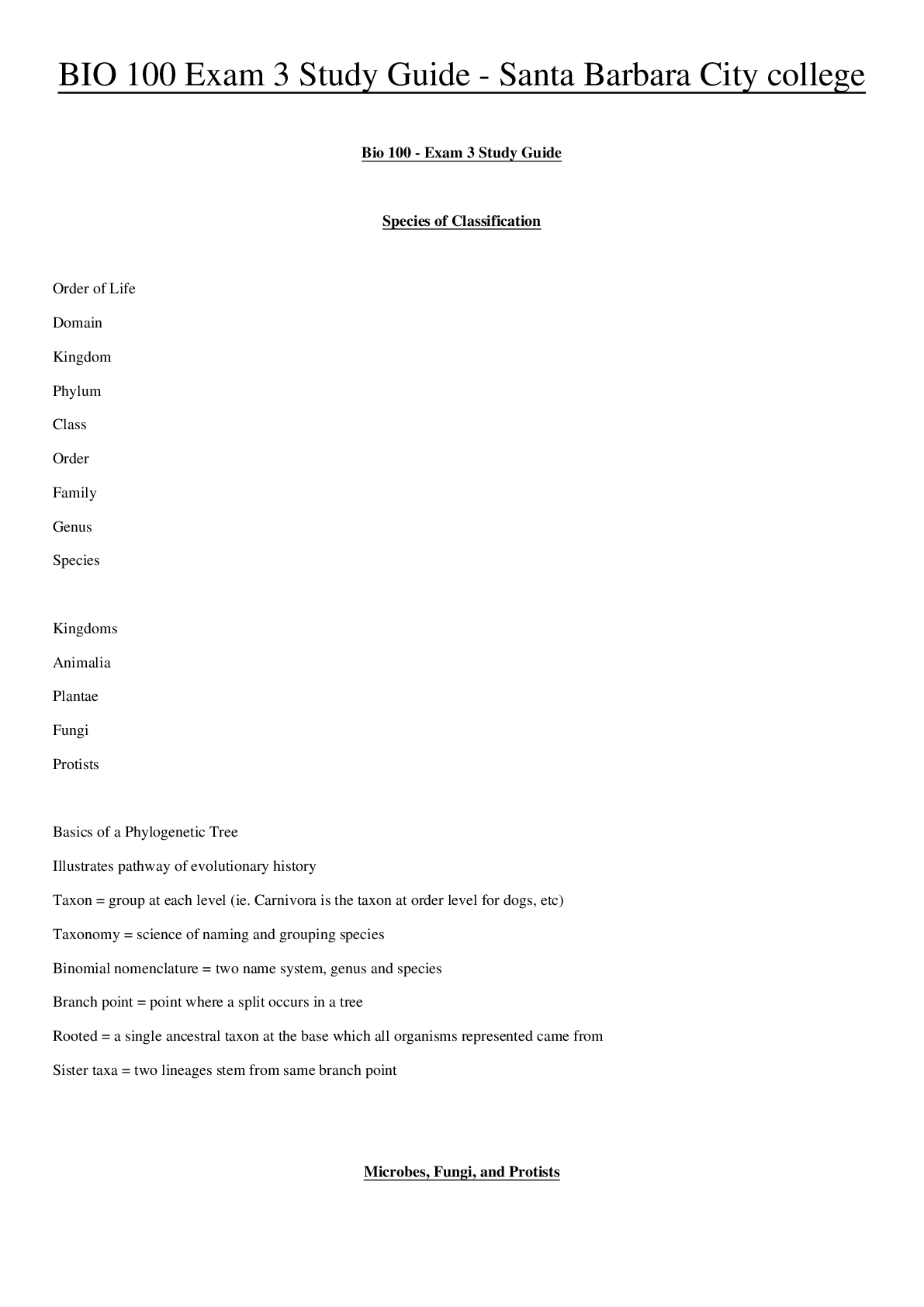
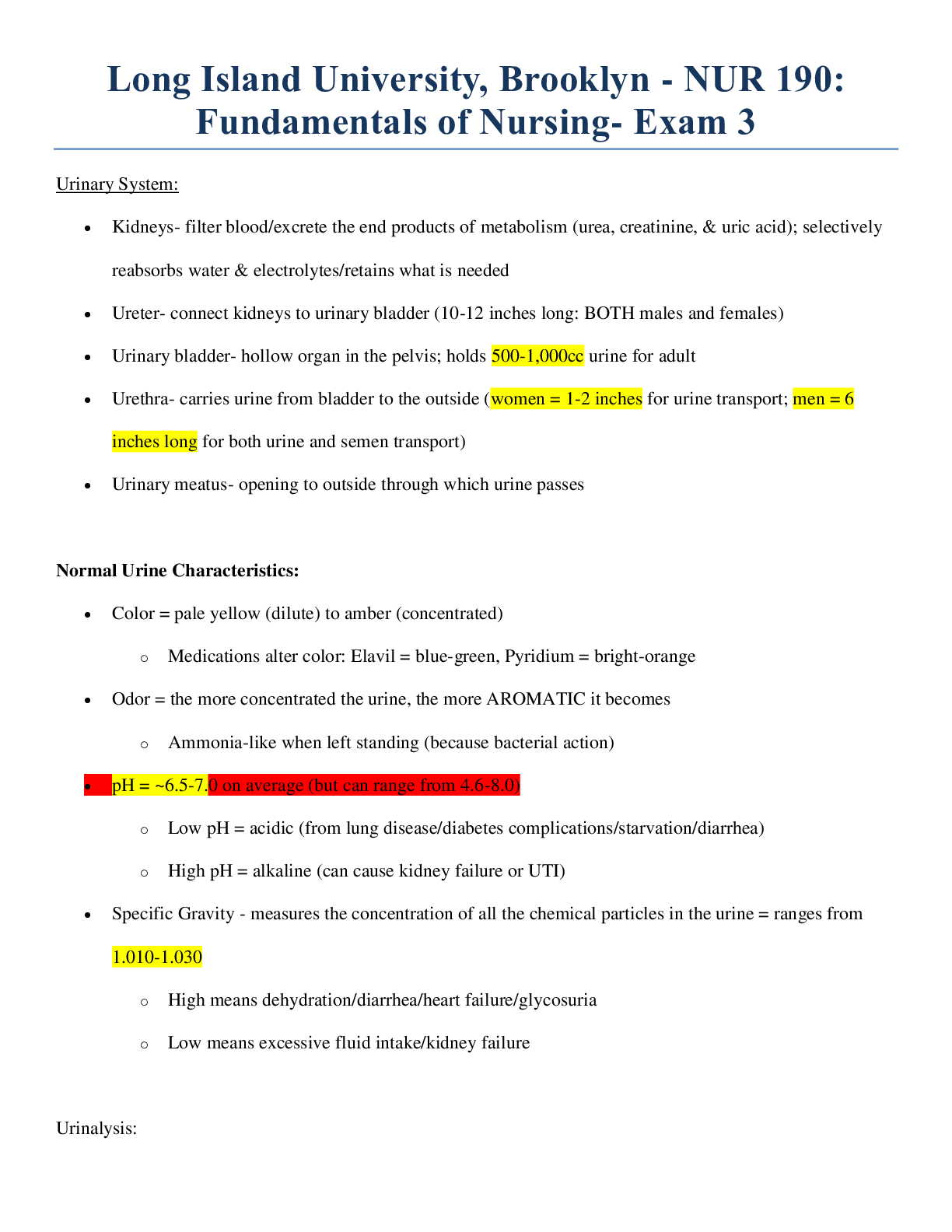


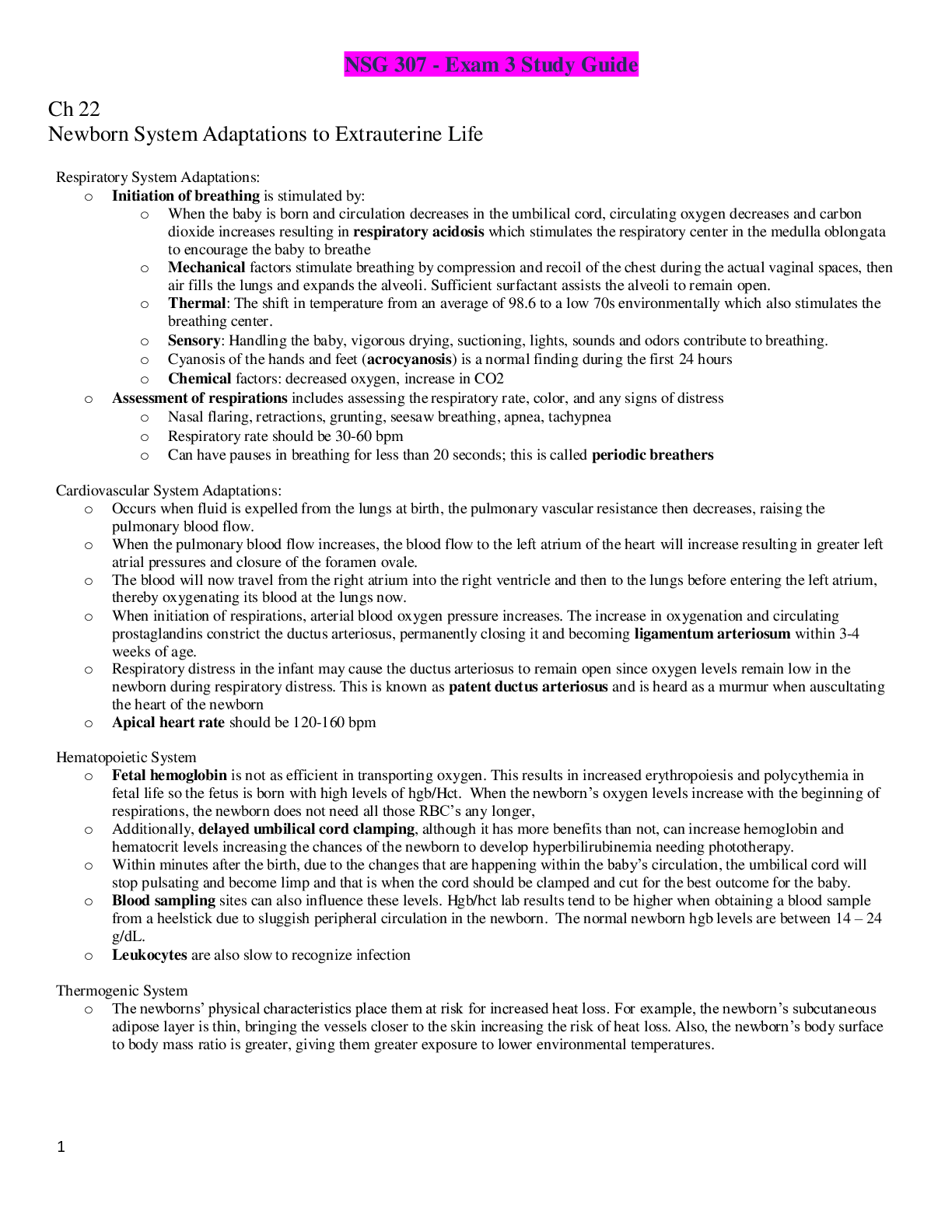
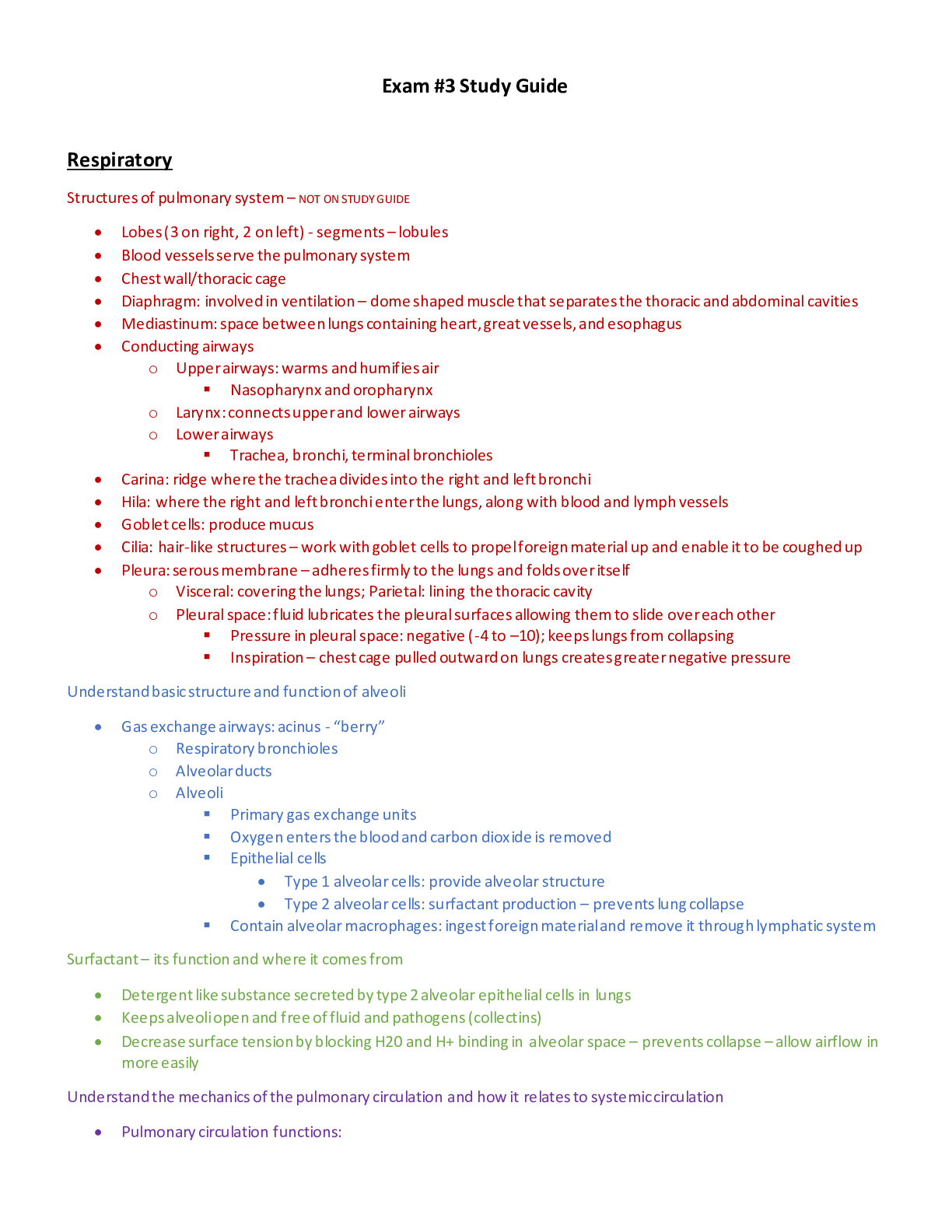

.png)


